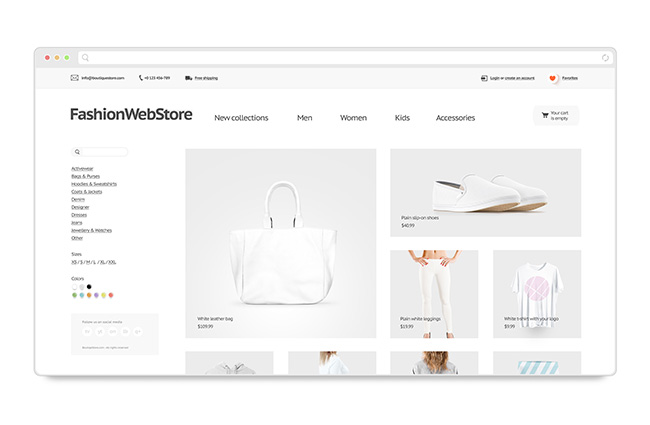How prepared for the holidays is your e-commerce solution on your website? Are you using Shopify, Woocommerce, or something similar? Now is the time to ask these questions, as October will speed by, and suddenly Black Friday and Cyber Monday will be here, as will potential customers flocking to their mobile phones and desktops to bargain hunt.
If your website is not prepared for this traffic, it can mean the loss of sales and revenue, and the potential for your website to crash if it can’t support the increase in transactions. To understand the importance of e-commerce readiness for online retailers, let’s start at the beginning – with the numbers. We’ll discuss the true volume of online shoppers, the trends in e-commerce following the mass COVID-19 quarantine, and how to both ready your website for holiday shopping, and increase your holiday sales.
How Many People Shop Online During the Holidays?
Research on holiday shopping is extensive. We, as marketers, are now armed with plenty of data that puts significant emphasis on yearly sales goals in the months of October through December. ROI Revolution, quoting Statista, summarizes sales percentages and revenue in the billions this way:
“After increasing 11% in 2018 and 16.2% in 2019, US digital holiday sales surged 32% year-over-year in 2020 to $185.9 billion. In 2021, e-commerce sales grew a smaller but still significant 14.4%, hitting $206.9 billion. Ecommerce sales made up nearly 1 in 5 holiday purchases last year.”
Digital Commerce 360 came up with a similar 2021 sales figure, while also providing a valuable visual for these numbers.
It is anticipated that the growth percentage will continue in double digits in 2022 but is expected to be closer to 10% in overall online sales growth.

Are Holiday Sales Up or Down?
This question really depends on your comparison scope. For example, in 2020 as mentioned above, online sales grew 32% year over year. This was clearly never going to be sustainable as COVID-19 protocols and public mandates relaxed. However, 2020 was instrumental in revolutionizing the way shoppers find their items online, and how quickly items can be shipped to homes. E-commerce transactions still gained ground in 2021, with a 14% increase over the pandemic 2020 year. However, the growth is slowing back toward pre-pandemic levels, while forever being amplified and elevated by 2020’s influx of transactions.
Because of this, e-commerce statistical powerhouse, Statista, created some easy-on-the-eyes visuals of just how impactful 2020 was. As you can see from this chart (paywall requirement), there is a significant discrepancy on the left side of the graph until 2020. Living in 2022, we can see that e-commerce’s portion of the overall market now stands at nearly 40% of all shopping. For other trends in digital marketing and e-commerce, take a look at our previous write-up here.
How to Get Your Website Ready for the Holidays
E-commerce design is nuanced – most platforms like Shopify and Woocommerce offer templates to help brands get their site pages up quickly and easily. However, not all e-commerce website builders are equal, and the best online sales website builder for your competitor might not be right for you.
The first place to start is to identify your sales needs in terms of how many products you will list. Pick an e-commerce website development tool that offers formatting that brings out the best in your products. A template with a product description that isn’t buried in expanding bullets is a great start, but also make sure that if your product has any technical elements to it, you have plenty of photo slots available to show it off.
Drilling a level deeper, after choosing a template for your products, the next step is setting up your pixel tracking and metrics environment so you can capture valuable metrics to discuss with your marketing team for future efforts. Your e-commerce developer should at least know how to place these pixels on the back end of your website, or into your e-commerce solution.

Having high-converting pages and being able to track results are two very major elements of a successful holiday sales season.
How to Increase Sales During the Holidays
Increasing holiday sales doesn’t happen overnight, unless you know somebody that knows somebody. Holiday sales are increased by the efforts and tactics you set up before the holiday season begins. Gathering influencers, working with affiliates, and getting to work on your SEO strength are all long-term efforts that pay huge dividends during the holiday season after you’ve refined them over months and years.
However, away from outreach and organic efforts, understanding your target audience and that the overall audience needs to be segmented into smaller, bite-sized chunks is the first step in effective advertising on social media and paid search.
An easy way to do this is to create mock Facebook ads, and to cruise through their interests and demographics to build avatars of your key audiences; that is, amalgamations of different walks of life personified by shared interests, behaviors, careers, etc. These segments, therefore, inform your ad copy, site copy, and the way you view potential customers.
Setting up additional efforts like blogging and email nurture marketing will add communication touchpoints with your customers to bring them back to a mindset that is ready to purchase.
Here at Fuze7 we specialize in not only adding these communication touchpoints to your marketing efforts, but we help you automate the process while setting up the proper tracking for results. If you’re looking to jump on e-commerce trends in 2022, we have you covered! Drop an email to info@fuze7.com or give us a call at (503) 830-0355.








